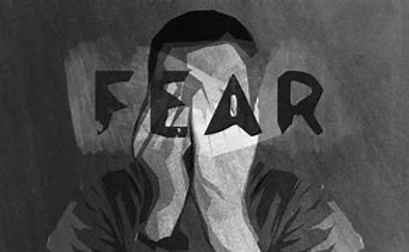Your cart is currently empty!

Understanding Fear in Money: A Debt-Based System
Money is central to human societies, yet it often elicits fear and uncertainty. For many, money represents security, freedom, and opportunity. Paradoxically, it also embodies anxiety, instability, and, for some, a sense of entrapment. This dichotomy becomes even more pronounced when considering the nature of modern fiat currency—money that is not backed by physical commodities like gold or silver but rather by trust and government decree. Adding to this complexity is the reality that fiat money is, fundamentally, someone else’s debt. Understanding the roots of this fear requires unpacking the mechanics of fiat money, the implications of a debt-based system, and the psychological impact it has on individuals.
The Nature of Fiat Money
Fiat money derives its value not from intrinsic worth but from the collective trust of the public and the authority of governments. In the United States, for instance, the Federal Reserve creates money through mechanisms like lending and the issuance of bonds. This process inherently ties the creation of money to debt. Treasury bonds, a form of government borrowing, form the backbone of the monetary system. When the government spends money, it essentially injects borrowed funds into the economy, which are then circulated as dollars.
This dynamic is compounded by the fractional-reserve banking system, where banks keep only a fraction of deposits on hand and loan out the rest. These loans create new money, expanding the money supply while tying much of it to personal or corporate debt. As a result, every dollar in circulation represents a claim on an economy structured around borrowing, spending, and repaying debt.
The Fear Factor: Why Money Evokes Anxiety
For many, understanding that money is tied to debt can provoke existential and practical fears. These fears stem from several sources:
- Uncertainty and Instability:
- Fiat money is subject to inflation, which erodes purchasing power over time. People fear that the value of their savings will diminish, making it harder to achieve financial security. This fear is amplified during periods of high inflation or economic downturns.
- Perceived Lack of Control:
- The realization that money is tied to debt highlights the fragility of the system. A government default or banking crisis could undermine the entire monetary structure, leaving individuals feeling powerless.
- Debt Dependency:
- The understanding that the economy relies on perpetual debt accumulation can be unsettling. It raises questions about sustainability and the long-term consequences of a system that incentivizes borrowing over saving.
- Moral and Philosophical Concerns:
- Some view the debt-based nature of money as exploitative, perpetuating cycles of inequality and dependency. The fear here is not just financial but ethical, questioning whether the system serves the majority or only a privileged few.
Fear as a Behavioral Driver
Fear of money and the system it represents can manifest in various ways:
- Hoarding Cash:
- Some individuals choose to keep their money outside the banking system, fearing a collapse or distrust in institutions.
- Overinvestment in Tangible Assets:
- Many turn to assets like gold, real estate, or cryptocurrencies to hedge against inflation and systemic risk, seeking refuge from the perceived instability of fiat money.
- Avoidance of Debt:
- While the system incentivizes borrowing, fear of debt can lead individuals to forgo opportunities like homeownership or business investments, potentially limiting their financial growth.
Why Fear Someone Else’s Debt?
At its core, fiat money symbolizes trust in an interconnected system. When people fear money, they are often projecting their anxieties about the system’s broader vulnerabilities. But why fear something that is, quite literally, someone else’s debt?
- Shared Consequences:
- Although the debt belongs to others (e.g., the government or corporations), its repercussions affect everyone. National debt can lead to inflation, higher taxes, or austerity measures, impacting individual well-being.
- Systemic Risk:
- A collapse in one part of the system (e.g., a financial institution failing to repay its obligations) can create ripple effects, threatening the entire economy.
- Illusion of Value:
- Understanding that money is tied to debt can challenge the perception of its stability and worth. If trust in the system erodes, the value of money could collapse, leaving individuals with little recourse.
Overcoming the Fear
While the fears surrounding fiat money are valid, understanding the system’s mechanics and limitations can help alleviate anxiety. Here are a few approaches to managing these fears:
- Financial Education:
- Gaining a deeper understanding of how money, debt, and the economy function can demystify the system and empower individuals to make informed decisions.
- Diversification:
- Investing in a mix of assets—stocks, bonds, real estate, and cryptocurrencies—can mitigate risks and provide a sense of security.
- Advocacy for Reform:
- Supporting initiatives that promote monetary reform, such as alternative currencies or policies aimed at reducing inequality, can provide a sense of agency.
Money, as a cornerstone of modern society, is both a tool and a source of fear. The debt-based nature of fiat currency adds layers of complexity, intertwining individual financial well-being with systemic dynamics. While these fears are rooted in valid concerns about stability, control, and ethics, they can also drive individuals toward greater financial literacy and resilience. Recognizing that money represents trust in a collective system—despite being tied to debt—can help shift the narrative from one of fear to one of informed engagement. In a world where money remains someone else’s debt, understanding and adaptability are key to navigating the system with confidence.
